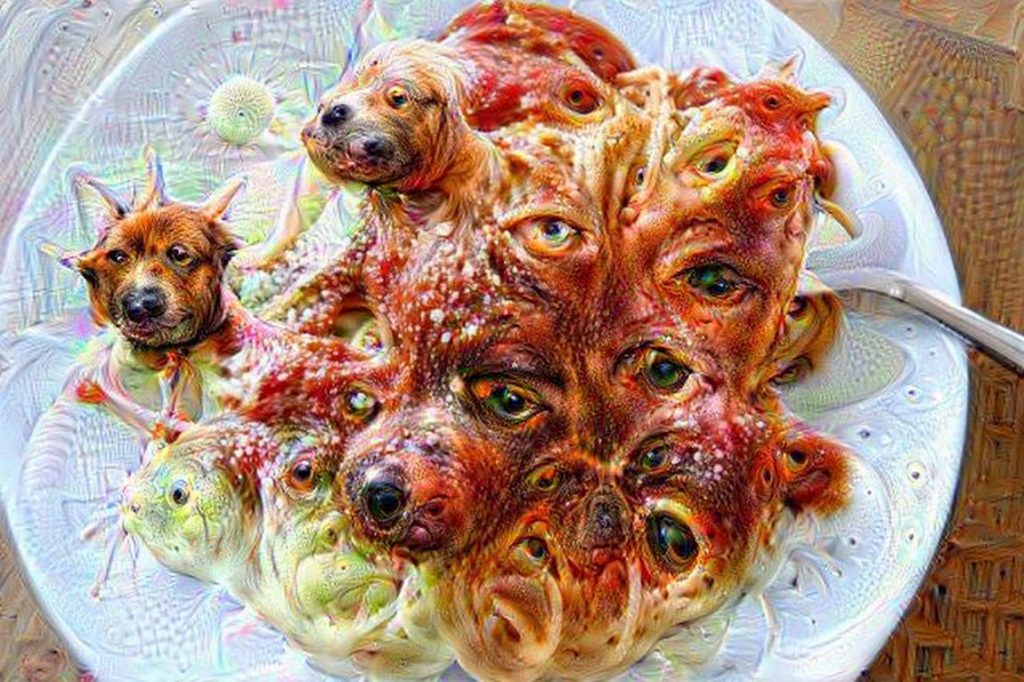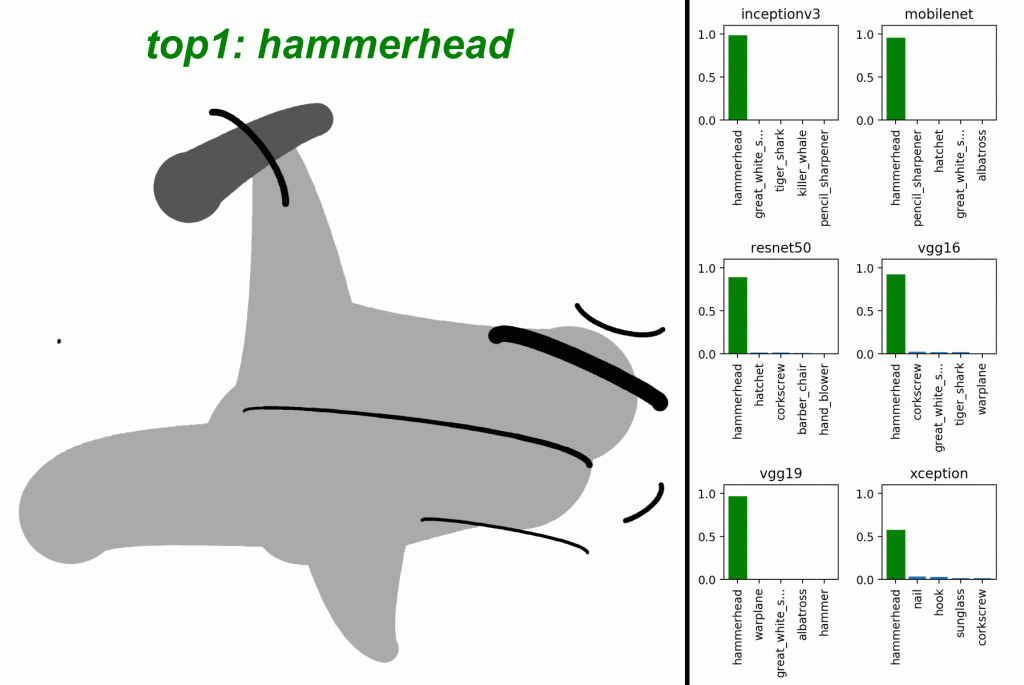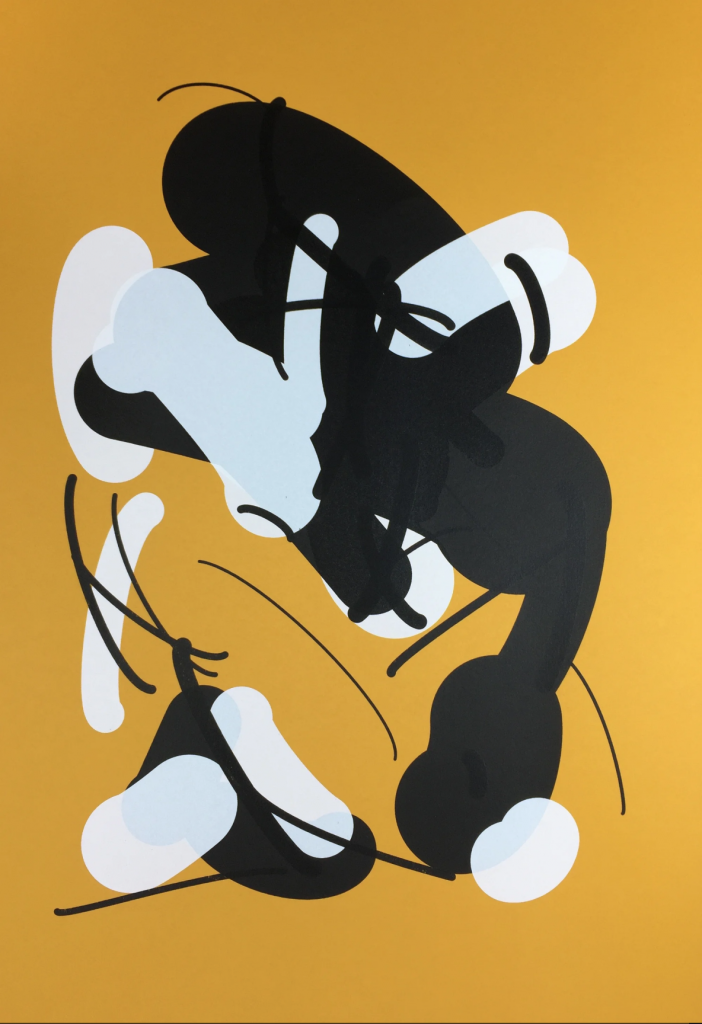Seeing Like a Computer
Here’s a video by Timo Arnall, “Robot Readable World“, which is made entirely of poetically repurposed demonstration videos from computer-vision research laboratories:
In related work, artist Trevor Paglen collaborated with the Kronos Quartet on Sight Machine (2018; video), a performance in which the musicians were analyzed by (projected) computer vision systems. “Sight Machine’s premise is simple and strange. The Kronos Quartet performs on stage, and Paglen runs a series of computer vision algorithms on the live video of this performance; behind the musicians, he then projects a video that these algorithms generate. Paglen is an artist best known for his photography of spy satellites, military drones, and secret intelligence facilities, and in the past couple of years, he has begun exploring the social ramifications of artificial intelligence.”
Neural networks build up understandings of images, beginning with simple visual phenomena (edges, spots), then textures, patterns, constituent parts (like wheels or noses), and objects (like cars or dogs). This is a great article to understand more: “Feature Visualization: How neural networks build up their understanding of images“, Olah, Chris and Mordvintsev, Alexander and Schubert, Ludwig.
Here’s Jason Yosinski’s video, Understanding Neural Networks Through Deep Visualization:
“DeepDream”, by Alex Mordvintsev, is a kind of iterative feedback algorithm in which an architecture whose neurons detect specific things (say, dogs) is asked: what small changes would need to be made to regions within this image, so that any part that already resembled something you recognized (like, a dog), looked even more like a dog? Then, make those changes….
Detecting pornography is a major challenge for Internet companies. Artist Tom White has been working to invert the efforts of these organizations, by creating innocuous images which are designed to fool machine vision systems, in order to better understand how computers see. Below is work from his 2018 series, Synthetic Abstractions:
Tom White’s Synthetic Abstractions series are seemingly innocent images, generated from simple lines and shapes, which trick algorithms into being classified as something else. Above is an arrangement of 10 lines which fools six widely-used classifiers into being perceived as a hammerhead shark, or an iron. Below is a silkscreen print, “Mustard Dream”, which White explains is flagged as “Explicit Nudity” by Amazon Web Services, “Racy” by Google SafeSearch, and “NSFW” by Yahoo. White’s work is “art by AI, for AI”, which helps us see the world through the eyes of a machine. He writes: “My artwork investigates the Algorithmic Gaze: how machines see, know, and articulate the world. As machine perception becomes more pervasive in our daily lives, the world as seen by computers becomes our dominant reality.” This print literally cannot be shown on the internet; taking a selfie in his gallery may get you banned from Instagram.




